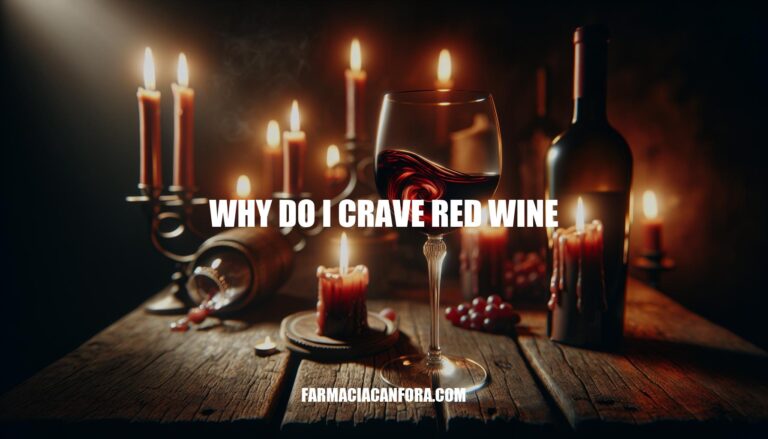


Craving red wine is a common experience for many people, often driven by a mix of physiological, psychological, and nutritional factors. Understanding why these cravings occur is important as it can provide insights into our physical health, emotional well-being, and potential nutritional deficiencies. This knowledge can help us make more informed choices about our consumption habits and overall lifestyle.
Craving red wine can be influenced by several physiological factors, particularly involving neurotransmitters like dopamine. Here’s a concise breakdown:
Dopamine: Known as the “feel-good” neurotransmitter, dopamine is released in the brain’s reward system when we consume pleasurable substances, including alcohol. Red wine, like other alcoholic beverages, can trigger a surge in dopamine, leading to feelings of pleasure and satisfaction.
Serotonin: This neurotransmitter helps regulate mood and social behavior. Alcohol can temporarily increase serotonin levels, which might enhance mood and contribute to cravings.
Endorphins: These are natural painkillers produced by the brain. Drinking red wine can stimulate the release of endorphins, creating a sense of euphoria and relaxation.
GABA (Gamma-Aminobutyric Acid): Alcohol enhances the effects of GABA, a neurotransmitter that inhibits brain activity, leading to feelings of calmness and reduced anxiety.
Glutamate: This neurotransmitter is involved in cognitive functions like learning and memory. Alcohol inhibits glutamate activity, which can lead to a temporary reduction in stress and anxiety.
These neurotransmitter interactions can create a cycle of craving and consumption, as the brain seeks to replicate the pleasurable effects experienced from drinking red wine.
Craving red wine can be influenced by several psychological factors:
Stress and Anxiety: Red wine is often used as a coping mechanism to alleviate stress and anxiety. The alcohol in red wine can temporarily reduce feelings of stress by affecting the brain’s neurotransmitters and the hypothalamic-pituitary-adrenal (HPA) axis.
Emotional Associations: Many people associate red wine with relaxation, social bonding, and positive experiences. These emotional associations can create a craving for red wine, especially in situations where one seeks comfort or a sense of connection.
Altered States of Consciousness: Drinking red wine can lead to altered states of consciousness, characterized by a sense of bliss, a focus on the present moment, and an enhanced appreciation of one’s surroundings. This can make red wine particularly appealing in tranquil environments.
These factors combined can make red wine a go-to choice for many when seeking to manage emotions or enhance their mood.
Cravings for red wine can be linked to nutritional deficiencies. For instance, red wine is a good source of folate (vitamin B9), which is crucial for cell growth and development. A deficiency in folate might lead to cravings for red wine as the body seeks to replenish its stores. Similarly, iron deficiency can also trigger cravings for red wine, as it is rich in iron, essential for oxygen transport in the body.
Habitual drinking patterns and routines can contribute to cravings for red wine through a process called classical conditioning. When you drink red wine regularly at the same time or in the same context (like after work to unwind), your brain starts associating that time or context with the pleasure and relaxation that wine provides. Over time, this association becomes stronger, making you crave wine whenever you’re in that situation.
Additionally, habit formation plays a role. Repeatedly drinking wine can shift control from conscious decision-making to automatic behaviors driven by the brain’s habit-forming regions. This makes it harder to resist the urge to drink, even if you want to cut back.
Social situations and environmental factors can significantly influence cravings for red wine through various mechanisms:
Social Situations:
Environmental Factors:
These factors interplay to create a complex web of triggers that can lead to cravings for red wine.
Cravings for red wine are influenced by physiological, psychological, and nutritional factors. Understanding these factors is crucial in managing cravings effectively.
Key points discussed include the role of neurotransmitters like dopamine, serotonin, endorphins, GABA, and glutamate in creating a cycle of craving and consumption.
Psychological factors such as stress, emotional associations, and altered states of consciousness also contribute to cravings.
Nutritional deficiencies, habitual drinking patterns, social situations, and environmental factors can also trigger cravings for red wine.
By recognizing the underlying reasons behind these cravings, individuals can make informed choices about their consumption habits and overall lifestyle.